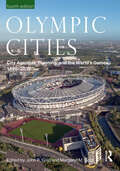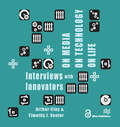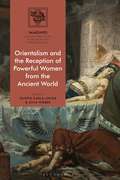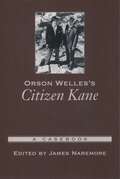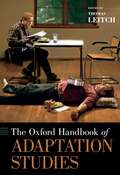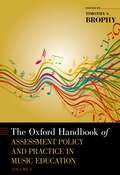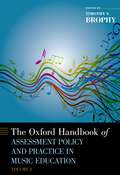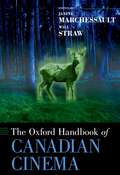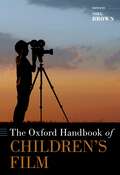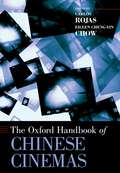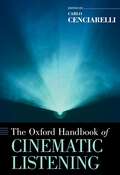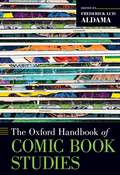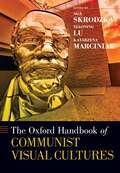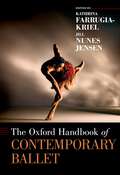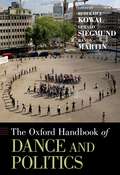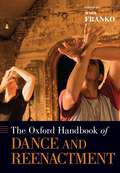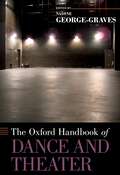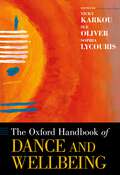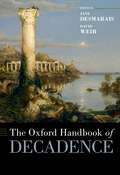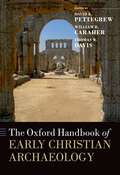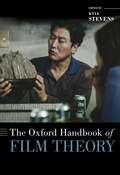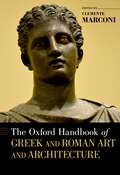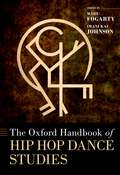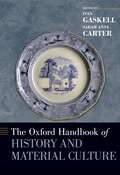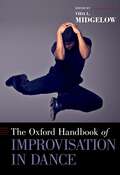- Table View
- List View
Olympic Cities: City Agendas, Planning, and the World’s Games, 1896 – 2032 (ISSN)
The first edition of Olympic Cities, published in 2007, provided a pioneering overview of the changing relationship between cities and the modern Olympic Games. This substantially revised and much enlarged fourth edition builds on the success of its predecessors. The first of its three parts provides overviews of the urban legacy of the four component Olympic festivals: the Summer Games; Winter Games; Cultural Olympiads; and the Paralympics. The second part comprises systematic surveys of six key aspects of activity involved in staging the Olympics and Paralympics: finance; sustainability; the creation of Olympic Villages; security; urban regeneration; and tourism. The final part consists of ten chronologically arranged portraits of host cities from 1960 to 2032, with complete coverage of the Summer Games of the twenty-first century.As controversy over the growing size and expense of the Olympics, with associated issues of democratic accountability and legacy, continues unabated, this book’s incisive and timely assessment of the Games’ development and the complex agendas that host cities attach to the event will be essential reading for a wide audience. This will include not just urban and sports historians, urban geographers, event managers, and city planners, but also anyone with an interest in the staging of mega-events and concerned with building a better understanding of the relationship between cities, sport, and culture.
On Media, On Technology, On Life - Interviews with Innovators
The book 'On Media, On Technology, On Life: Interviews with Innovators' features thirteen artist-researchers whose artworks reconfigure the relationships between living bodies, microorganisms, tools, techniques, and institutions to ask new questions of life itself. When encountered for the first time, these are works that seem to challenge a conventional understanding of what artists and scientists do. Through the words of the artists themselves, these interviews explore what it means to spearhead innovative new partnerships able to create work that takes on a life of its own. By posing new questions at the interface between media, technology, and life, the book explores themes such as the life of multi-species bodies, the future of food security in the age of biotechnology, the microbial lives of historic archives, and the biohacker communities of the future. Together, they reveal how we are all actors in this theatre of life innovation.
Orientalism and the Reception of Powerful Women from the Ancient World (IMAGINES – Classical Receptions in the Visual and Performing Arts)
Why is Cleopatra, a descendent of Alexander the Great, a Ptolemy from a Greek–Macedonian family, in popular imagination an Oriental woman? True, she assumed some aspects of pharaonic imagery in order to rule Egypt, but her Orientalism mostly derives from ancient (Roman) and modern stereotypes: both the Orient and the idea of a woman in power are signs, in the Western tradition, of 'otherness' – and in this sense they can easily overlap and interchange. This volume investigates how ancient women, and particularly powerful women, such as queens and empresses, have been re-imagined in Western (and not only Western) arts; highlights how this re-imagination and re-visualization is, more often than not, the product of Orientalist stereotypes – even when dealing with women who had nothing to do with Eastern regions; and compares these images with examples of Eastern gaze on the same women. Through the chapters in this volume, readers will discover the similarities and differences in the ways in which women in power were and still are described and decried by their opponents.
Orson Welles's Citizen Kane: A Casebook (Casebooks in Criticism)
Citizen Kane is arguably the most admired and significant film since the advent of talking pictures. No other film is quite so interesting from both artistic and political points of view. To study it even briefly is to learn a great deal about American history, motion-picture style, and the literary aspects of motion-picture scripts. Rather than presenting a sterile display of critical methodologies, James Naremore has gathered a set of essays that represent the essential writings on the film. It gives the reader a lively set of critical interpretations, together with the necessary production information, historical background, and technical understanding to comprehend the film's larger cultural significance. Selections range from the anecdotal --Peter Bogdanovich's interview with Orson Welles--to the critical, with discussions on the scripts and sound track, and a discussion of what accounts for the film's enduring popularity. Contributors include James Naremore, Peter Bogdanovich, Jonathan Rosenbaum, Robert L. Carringer, François Thomas, Michael Denning, Laura Mulvey, Peter Wollen, and Paul Arthur.
The Oxford Handbook of Adaptation Studies (Oxford Handbooks)
This collection of forty new essays, written by the leading scholars in adaptation studies and distinguished contributors from outside the field, is the most comprehensive volume on adaptation ever published. Written to appeal alike to specialists in adaptation, scholars in allied fields, and general readers, it hearkens back to the foundations of adaptation studies a century and more ago, surveys its ferment of activity over the past twenty years, and looks forward to the future. It considers the very different problems in adapting the classics, from the Bible to Frankenstein to Philip Roth, and the commons, from online mashups and remixes to adult movies. It surveys a dizzying range of adaptations around the world, from Latin American telenovelas to Czech cinema, from Hong Kong comics to Classics Illustrated, from Bollywood to zombies, and explores the ways media as different as radio, opera, popular song, and videogames have handled adaptation. Going still further, it examines the relations between adaptation and such intertextual practices as translation, illustration, prequels, sequels, remakes, intermediality, and transmediality. The volume's contributors consider the similarities and differences between adaptation and history, adaptation and performance, adaptation and revision, and textual and biological adaptation, casting an appreciative but critical eye on the theory and practice of adaptation scholars--and, occasionally, each other. The Oxford Handbook of Adaptation Studies offers specific suggestions for how to read, teach, create, and write about adaptations in order to prepare for a world in which adaptation, already ubiquitous, is likely to become ever more important.
The Oxford Handbook of Assessment Policy and Practice in Music Education, Volume 1 (Oxford Handbooks)
In the music classroom, instructors who hope to receive aid are required to provide data on their classroom programs. Due to the lack of reliable, valid large-scale assessments of student achievement in music, however, music educators in schools that accept funds face a considerable challenge in finding a way to measure student learning in their classrooms. From Australia to Taiwan to the Netherlands, music teachers experience similar struggles in the quest for a definitive assessment resource that can be used by both music educators and researchers. In this two-volume Handbook, contributors from across the globe come together to provide an authority on the assessment, measurement, and evaluation of student learning in music. The Handbook's first volume emphasizes international and theoretical perspectives on music education assessment in the major world regions. This volume also looks at technical aspects of measurement in music, and outlines situations where theoretical foundations can be applied to the development of tests in music. The Handbook's second volume offers a series of practical and US-focused approaches to music education assessment. Chapters address assessment in different types of US classrooms; how to assess specific skills or requirements; and how assessment can be used in tertiary and music teacher education classrooms. Together, both volumes of The Oxford Handbook of Assessment in Music Education pave the way forward for music educators and researchers in the field.
The Oxford Handbook of Assessment Policy and Practice in Music Education, Volume 2 (Oxford Handbooks)
In the music classroom, instructors who hope to receive aid are required to provide data on their classroom programs. Due to the lack of reliable, valid large-scale assessments of student achievement in music, however, music educators in schools that accept funds face a considerable challenge in finding a way to measure student learning in their classrooms. From Australia to Taiwan to the Netherlands, music teachers experience similar struggles in the quest for a definitive assessment resource that can be used by both music educators and researchers. In this two-volume Handbook, contributors from across the globe come together to provide an authority on the assessment, measurement, and evaluation of student learning in music. The Handbook's first volume emphasizes international and theoretical perspectives on music education assessment in the major world regions. This volume also looks at technical aspects of measurement in music, and outlines situations where theoretical foundations can be applied to the development of tests in music. The Handbook's second volume offers a series of practical and US-focused approaches to music education assessment. Chapters address assessment in different types of US classrooms; how to assess specific skills or requirements; and how assessment can be used in tertiary and music teacher education classrooms. Together, both volumes of The Oxford Handbook of Assessment in Music Education pave the way forward for music educators and researchers in the field.
The Oxford Handbook of Canadian Cinema (Oxford Handbooks)
The chapters in The Oxford Handbook of Canadian Cinema present a rich, diverse overview of Canadian cinema. Responding to the latest developments in Canadian film studies, this volume takes into account the variety of artistic voices, media technologies, and places which have marked cinema in Canada throughout its history. Drawing on a range of established and emerging scholars from a range of disciplines, this volume will be useful to teachers, scholars, and to a general readership interested in cinema in Canada. Moving beyond the director-focused approach of much previous scholarship, this book is concerned with communities, institutions, and audiences for Canadian cinema at both national and international levels. The choice of subjects covered ranges from popular, genre cinema to the most experimental of artistic interventions. Canadian cinema is seen in its interaction with other forms of art-making and media production in Canada and at the international level. Particular attention has been paid to the work of Indigenous filmmakers, members of diasporic communities and feminist and LGBTQ artists. The result is a book attentive to the complex social and institutional contexts in which Canadian cinema is made and consumed.
The Oxford Handbook of Children's Film (Oxford Handbooks)
The Oxford Handbook of Children's Film is the most comprehensive study of international children's cinema published to date. Overturning common prejudices that films for children are unworthy of serious attention, it presents nuanced and wide-ranging discussions from senior and junior scholars alike of iconic and neglected productions from Hollywood, Britain, France, Germany, Sweden, Norway, Hungary, Australia, China, Japan, South Korea, India, Iran, Kenya, and several other countries. Featuring contributions by leading scholars in the field, the volume considers a range of issues central to the study of children's film, including questions of form and definition; representations of childhood and growing up; music, stardom, and performance; how children's films reflect national identity or serve as vehicles of state ideology and propaganda; the phenomenon of Hollywood 'family entertainment', especially the role of the Disney company; and how children and young people (as well as older audiences) engage with children's film culture. As a whole, the volume makes a substantial contribution to the emerging field of children's film studies, and will be of great interest to scholars of children's media and culture more broadly.
The Oxford Handbook of Chinese Cinemas (Oxford Handbooks)
What does it mean for a cinematic work to be "Chinese"? Does it refer specifically to a work's subject, or does it also reflect considerations of language, ethnicity, nationality, ideology, or political orientation? Such questions make any single approach to a vast field like "Chinese cinema" difficult at best. Accordingly, The Oxford Handbook of Chinese Cinemas situates the term more broadly among various different phases, genres, and distinct national configurations, while taking care to address the consequences of grouping together so many disparate histories under a single banner. Offering both a platform for cross-disciplinary dialogue and a mapping of Chinese cinema as an expanded field, this Handbook presents thirty-three essays by leading researchers and scholars intent on yielding new insights and new analyses using three different methodologies. Chapters in Part I investigate the historical periodizations of the field through changing notions of national and political identity -- all the way from the industry's beginnings in the 1920s up to its current forms in contemporary Hong Kong, Taiwan, and the global diaspora. Chapters in Part II feature studies centered on the field's taxonomical formalities, including such topics as the role of the Chinese opera in technological innovation, the political logic of the "Maoist film," and the psychoanalytic formula of the kung fu action film. Finally, in Part III, focus is given to the structural elements that comprise a work's production, distribution, and reception to reveal the broader cinematic apparatuses within which these works are positioned. Taken together, the multipronged approach supports a wider platform beyond the geopolitical and linguistic limitations in existing scholarship. Expertly edited to illustrate a representative set of up to date topics and approaches, The Oxford Handbook of Chinese Cinemas provides a vital addition to a burgeoning field still in its formative stages.
The Oxford Handbook of Cinematic Listening (Oxford Handbooks)
The Oxford Handbook of Cinematic Listening explores the place of cinema in the history of listening. It looks at the ways in which listening to film is situated in textual, spatial, and social practices, and also studies how cinematic modes of listening have extended into other media and everyday experiences. Chapters are structured around six themes. Part I ("Genealogies and Beginnings") considers film sound in light of pre-existing practices such as opera and shadow theatre, and also explores changes in listening taking place at critical junctures in the early history of cinema. Part II ("Locations and Relocations") focuses on specific venues and presentational practices from roadshow movies to contemporary live-score screenings. Part III ("Representations and Re-Presentations") zooms into the formal properties of specific films, analyzing representations of listening on screen as well as the role of sound as a representational surplus. Part IV ("The Listening Body") focuses on the power of cinematic sound to engage the full body sensorium. Part V ("Listening Again") discusses a range of ways in which film sound is encountered and reinterpreted outside the cinema, whether through ancillary materials such as songs and soundtrack albums, or in experimental conditions and pedagogical contexts. Part VI ("Across Media") compares cinema with the listening protocols of TV series and music video, promenade theatre and personal stereos, video games and Virtual Reality.
The Oxford Handbook of Comic Book Studies (Oxford Handbooks)
Comic book studies has developed as a solid academic discipline, becoming an increasingly vibrant field in the United States and globally. A growing number of dissertations, monographs, and edited books publish every year on the subject, while world comics represent the fastest-growing sector of publishing. The Oxford Handbook of Comic Book Studies looks at the field systematically, examining the history and evolution of the genre from a global perspective. This includes a discussion of how comic books are built out of shared aesthetic systems such as literature, painting, drawing, photography, and film. The Handbook brings together readable, jargon-free essays written by established and emerging scholars from diverse geographic, institutional, gender, and national backgrounds. In particular, it explores how the term "global comics" has been defined, as well the major movements and trends that will drive the field in the years to come. Each essay will help readers understand comic books as a storytelling form grown within specific communities, and will also show how these forms exist within what can be considered a world system of comics.
The Oxford Handbook of Communist Visual Cultures (Oxford Handbooks)
Stereotypes often cast communism as a defunct, bankrupt ideology and a relic of the distant past. However, recent political movements like Europe's anti-austerity protests, the Arab Spring, and Occupy Wall Street suggest that communism is still very much relevant and may even hold the key to a new, idealized future. In The Oxford Handbook of Communist Visual Cultures, contributors trace the legacies of communist ideology in visual culture, from buildings and monuments, murals and sculpture, to recycling campaigns and wall newspapers, all of which work to make communism's ideas and values material. Contributors work to resist the widespread demonization of communism, demystifying its ideals and suggesting that it has visually shaped the modern world in undeniable and complex ways. Together, contributors answer curcial questions like: What can be salvaged and reused from past communist experiments? How has communism impacted the cultures of late capitalism? And how have histories of communism left behind visual traces of potential utopias? An interdisciplinary look at the cultural currency of communism today, The Oxford Handbook of Communist Visual Cultures demonstrates the value of revisiting the practices of the past to form a better vision of the future.
The Oxford Handbook of Contemporary Ballet (Oxford Handbooks)
In distinction to many extant histories of ballet, The Oxford Handbook of Contemporary Ballet prioritizes connections between ballet communities as it interweaves chapters by scholars, critics, choreographers, and working professional dancers. The book looks at the many ways ballet functions as a global practice in the 21st century, providing new perspectives on ballet's past, present, and future. As an effort to dismantle the linearity of academic canons, the fifty-three chapters within provide multiple entry points for readers to engage in balletic discourse. With an emphasis on composition and process alongside dances created, and the assertion that contemporary ballet is a definitive era, the book carves out space for critical inquiry. Many of the chapters consider whether or not ballet can reconcile its past and actually become present, while others see ballet as flexible and willing to be remolded at the hands of those with tools to do so.
The Oxford Handbook of Dance and Politics (Oxford Handbooks)
In recent decades, dance has become a vehicle for querying assumptions about what it means to be embodied, in turn illuminating intersections among the political, the social, the aesthetical, and the phenomenological. The Oxford Handbook of Dance and Politics edited by internationally lauded scholars Rebekah Kowal, Gerald Siegmund, and the late Randy Martin presents a compendium of newly-commissioned chapters that address the interdisciplinary and global scope of dance theory - its political philosophy, social movements, and approaches to bodily difference such as disability, postcolonial, and critical race and queer studies. In six sections 30 of the most prestigious dance scholars in the US and Europe track the political economy of dance and analyze the political dimensions of choreography, of writing history, and of embodied phenomena in general. Employing years of intimate knowledge of dance and its cultural phenomenology, scholars urge readers to re-think dominant cultural codes, their usages, and the meaning they produce and theorize ways dance may help to re-signify and to re-negotiate established cultural practices and their inherent power relations. This handbook poses ever-present questions about dance politics-which aspects or effects of a dance can be considered political? What possibilities and understandings of politics are disclosed through dance? How does a particular dance articulate or undermine forces of authority? How might dance relate to emancipation or bondage of the body? Where and how can dance articulate social movements, represent or challenge political institutions, or offer insight into habits of labor and leisure? The handbook opens its critical terms in two directions. First, it offers an elaborated understanding of how dance achieves its politics. Second, it illustrates how notions of the political are themselves expanded when viewed from the perspective of dance, thus addressing both the relationship between the politics in dance and the politics of dance. Using the most sophisticated theoretical frameworks and engaging with the problematics that come from philosophy, social science, history, and the humanities, chapters explore the affinities, affiliations, concepts, and critiques that are inherent in the act of dance, and questions about matters political that dance makes legible.
The Oxford Handbook of Dance and Reenactment (Oxford Handbooks)
The Oxford Handbook of Dance and Reenactment brings together a cross-section of artists and scholars engaged with the phenomenon of reenactment in dance from a practical and theoretical standpoint. Synthesizing myriad views on danced reenactment and the manner in which this branch of choreographic performance intersects with important cultural concerns around appropriation this Handbook addresses originality, plagiarism, historicity, and spatiality as it relates to cultural geography. Others topics treated include transmission as a heuristic device, the notion of the archive as it relates to dance and as it is frequently contrasted with embodied cultural memory, pedagogy, theory of history, reconstruction as a methodology, testimony and witnessing, theories of history as narrative and the impact of dance on modernist literature, and relations of reenactment to historical knowledge and new media.
The Oxford Handbook of Dance and Theater (Oxford Handbooks)
The Oxford Handbook of Dance and Theater collects a critical mass of border-crossing scholarship on the intersections of dance and theatre. Taking corporeality as an idea that unites the work of dance and theater scholars and artists, and embodiment as a negotiation of power dynamics with important stakes, these essays focus on the politics and poetics of the moving body in performance both on and off stage. Contemporary stage performances have sparked global interest in new experiments between dance and theater, and this volume situates this interest in its historical context by extensively investigating other such moments: from pagan mimes of late antiquity to early modern archives to Bolshevik Russia to post-Sandinista Nicaragua to Chinese opera on the international stage, to contemporary flash mobs and television dance contests. Ideologically, the essays investigate critical race theory, affect theory, cognitive science, historiography, dance dramaturgy, spatiality, gender, somatics, ritual, and biopolitics among other modes of inquiry. In terms of aesthetics, they examine many genres such as musical theater, contemporary dance, improvisation, experimental theater, television, African total theater, modern dance, new Indian dance theater aesthetics, philanthroproductions, Butoh, carnival, equestrian performance, tanztheater, Korean Talchum, Nazi Movement Choirs, Lindy Hop, Bomba, Caroline Masques, political demonstrations, and Hip Hop. The volume includes innovative essays from both young and seasoned scholars and scholar/practitioners who are working at the cutting edges of their fields. The handbook brings together essays that offer new insight into well-studied areas, challenge current knowledge, attend to neglected practices or moments in time, and that identify emergent themes. The overall result is a better understanding of the roles of dance and theater in the performative production of meaning.
The Oxford Handbook of Dance and Wellbeing (Oxford Handbooks)
In recent years, a growth in dance and wellbeing scholarship has resulted in new ways of thinking that place the body, movement, and dance in a central place with renewed significance for wellbeing. The Oxford Handbook of Dance and Wellbeing examines dance and related movement practices from the perspectives of neuroscience and health, community and education, and psychology and sociology to contribute towards an understanding of wellbeing, offer new insights into existing practices, and create a space where sufficient exchange is enabled. The handbook's research components include quantitative, qualitative, and arts-based research, covering diverse discourses, methodologies, and perspectives that add to the development of a complete picture of the topic. Throughout the handbook's wide-ranging chapters, the objective observations, felt experiences, and artistic explorations of practitioners interact with and are printed alongside academic chapters to establish an egalitarian and impactful exchange of ideas.
The Oxford Handbook of Decadence (Oxford Handbooks)
The meaning of decadence varies with context, depending on what (or who) is understood to have declined, decayed, or degenerated. These negative meanings are familiar from history (the decline and fall of Rome), sociology (the decay of communities), morality (the degeneration of values), and more, including such popular conceptions of decadence as excess and corruption. At the same time, all of this negative decadence has found positive cultural expression, principally in literature, through the work of such celebrated nineteenth-century decadents as Charles Baudelaire, Oscar Wilde, and many others. This volume takes the study of decadence beyond these canonical literary works to explore the phenomenon in broader historical, geographical, and cultural contexts. In thirty-five chapters by esteemed scholars from a range of disciplines, the Oxford Handbook of Decadence addresses different critical periods, such as classical antiquity, various ages of empire, the interwar era in the twentieth century, and contemporary times, as well as key places--France, Belgium, Britain, Italy, Germany, the Nordic nations, Russia and Ukraine, the Ottoman Empire, and Japan--and such genres as the novel, the short story, drama, the essay, prose poetry, and film. The volume also considers decadence more broadly as a culture not limited to literature by tracing its manifestations in such material forms as book design, fashion, interior decoration, and architecture, as well as through the experiential register of the senses: decadent vision, sound, smell, taste, and touch are all reflected, respectively, in painting, music, perfume, cuisine, and feeling. Finally, the chapters explore the theoretical resonance of decadence in such fields as theology, science, ecology, politics, psychoanalysis, and philosophy. By illuminating the various ways decadence can be construed, the Handbook offers an in-depth and original exploration into the paradox of decadence: a culture that draws its creative energy from the idea of decline.
The Oxford Handbook of Early Christian Archaeology (Oxford Handbooks)
The Oxford Handbook of Early Christian Archaeology brings together expert work by leading scholars of the archaeology of Early Christianity and the Roman world in the Mediterranean and surrounding regions. The thirty-four contributions to this volume survey Christian material culture and ground the history, culture, and society of the first seven centuries of Christianity in archaeological method, theory, and research. The essays emphasize the link between archaeological fieldwork, methods, and regional and national traditions in constructing our knowledge of the Early Church and Christian communities within the context of the ancient Mediterranean, Near East, and Europe. Three sweeping introductory essays provide historical perspectives on the archaeology of the Early Christian world. These are followed by a series of topical treatments that focus on monuments and environments ranging from Christian churches to catacombs, martyria, and baths, as well as classes of objects of religious significance such as ceramics, lamps, and icons. Finally, the volume locates the archaeology of the Early Christian world in fifteen regional studies stretching from Britain to Persia, highlighting the unique historical contexts that have shaped scholarly discussion across time and space. The thorough, carefully-researched essays offer the most intensive, state-of-the-art treatment of recent research into the archaeology of Early Christianity available.
The Oxford Handbook of Film Theory (OXFORD HANDBOOKS SERIES)
Despite changes in the media landscape, film remains a vital force in contemporary culture, as do our ideas of what "a movie" or "the cinematic" are. Indeed, we might say that the category of film now only exists in theory. Whereas film-theoretical discussion at the turn of the 21st century was preoccupied, understandably, by digital technology's permeation of virtually all aspects of the film object, this volume moves the conversation away from a focus on film's materiality towards timely questions concerning the ethics, politics, and even aesthetics of thinking about the medium of cinema. To put it another way, this collection narrows in on the subject of film, not with a nostalgic sensibility, but with the recognition that what constitutes a film is historically contingent, in dialogue with the vicissitudes of entertainment, art, and empire. The volume is divided into six sections: Meta-Theory; Film Theory's Project of Emancipation; Apparatus and Perception; Audiovisuality; How Close is Close Reading?; and The Turn to Experience.
The Oxford Handbook of Greek and Roman Art and Architecture (Oxford Handbooks)
The study of Greek and Roman Art and Architecture has a long history that goes back to the second half of the 18th century and has provided an essential contribution towards the creation and the definition of the wider disciplines of Art History and Architectural History. This venerable tradition and record are in part responsible for the diffused tendency to avoid general discussions addressing the larger theoretical implications, methodologies, and directions of research in the discipline. This attitude is in sharp contrast not only with the wider field of Art History, but also with disciplines that are traditionally associated with the study of Greek and Roman Art and Architecture, like Classics and Classical Archaeology. In recent years, the field has been characterized by an ever-increasing range of approaches, under the influence of various disciplines such as Sociology, Semiotics, Gender Theory, Anthropology, Reception Theory, and Hermeneutics. In light of these recent developments, this Handbook seeks to explore key aspects of Greek and Roman Art and Architecture, and to assess the current state of the discipline. The Handbook includes thirty essays, in addition to the introduction, by an international team of leading senior scholars, who have played a critical role in shaping the field, and by younger scholars, who will express the perspectives of a newer generation. After a framing introduction written by the editor, which compares ancient and modern notions of art and architecture, the Handbook is divided into five sections: Pictures from the Inside, Greek and Roman Art and Architecture in the Making, Ancient Contexts, Post-Antique Contexts, and Approaches. Together, the essays in the volume make for an innovative and important book, one that is certain to find a wide readership.
The Oxford Handbook of Hip Hop Dance Studies (Oxford Handbooks)
Engaging with a broad range of research and performance genres, The Oxford Handbook of Hip Hop Dance Studies offers the most comprehensive research on Hip Hop dance to date. Filling a lacuna in both Hip Hop and dance studies, the Handbook places practitioners' voices at the forefront and in dialogue with theoretical insights, rooted in critical race theory, anticolonialism, intersectional feminism, and more. Volume editors Mary Fogarty and Imani Kai Johnson have included influential dancers and scholars from around the world: from B-Boys Ken Swift, YNOT, and Storm, to practitioners of locking, waacking and House dance styles such as E. Moncell Durden, Terry Bright Kweku Ofosu, Fly Lady Di, and Leah McFly, and innovative academic work on Hip Hop dance by the most prominent researchers in the field. Throughout the Handbook contributors address individual and social histories of dance, Afrodiasporic and global lineages, the contribution of B-Girls from Honey Rockwell to Rokafella, the "studio-fication" of Hip Hop styles, and moves into theatre, TV, and the digital/social media space.
The Oxford Handbook of History and Material Culture (Oxford Handbooks)
Most historians rely principally on written sources. Yet there are other traces of the past available to historians: the material things that people have chosen, made, and used. This book examines how material culture can enhance historians' understanding of the past, both worldwide and across time. The successful use of material culture in history depends on treating material things of many kinds not as illustrations, but as primary evidence. Each kind of material thing-and there are many-requires the application of interpretive skills appropriate to it. These skills overlap with those acquired by scholars in disciplines that may abut history but are often relatively unfamiliar to historians, including anthropology, archaeology, and art history. Creative historians can adapt and apply the same skills they honed while studying more traditional text-based documents even as they borrow methods from these fields. They can think through familiar historical problems in new ways. They can also deploy material culture to discover the pasts of constituencies who have left few or no traces in written records. The authors of this volume contribute case studies arranged thematically in six sections that respectively address the relationship of history and material culture to cognition, technology, the symbolic, social distinction, and memory. They range across time and space, from Paleolithic to Punk.
The Oxford Handbook of Improvisation in Dance (Oxford Handbooks)
From the dance floor of a tango club to group therapy classes, from ballet to community theatre, improvised dance is everywhere. For some dance artists, improvisation is one of many approaches within the choreographic process. For others, it is a performance form in its own right. And while it has long been practiced, it is only within the last twenty years that dance improvisation has become a topic of critical inquiry. With The Oxford Handbook of Improvisation in Dance, dancer, teacher, and editor Vida L. Midgelow provides a cutting-edge volume on dance improvisation in all its facets. Expanding beyond conventional dance frameworks, this handbook looks at the ways that dance improvisation practices reflect our ability to adapt, communicate, and respond to our environment. Throughout the handbook, case studies from a variety of disciplines showcase the role of individual agency and collective relationships in improvisation, not just to dancers but to people of all backgrounds and abilities. In doing so, chapters celebrate all forms of improvisation, and unravel the ways that this kind of movement informs understandings of history, socio-cultural conditions, lived experience, cognition, and technologies.
